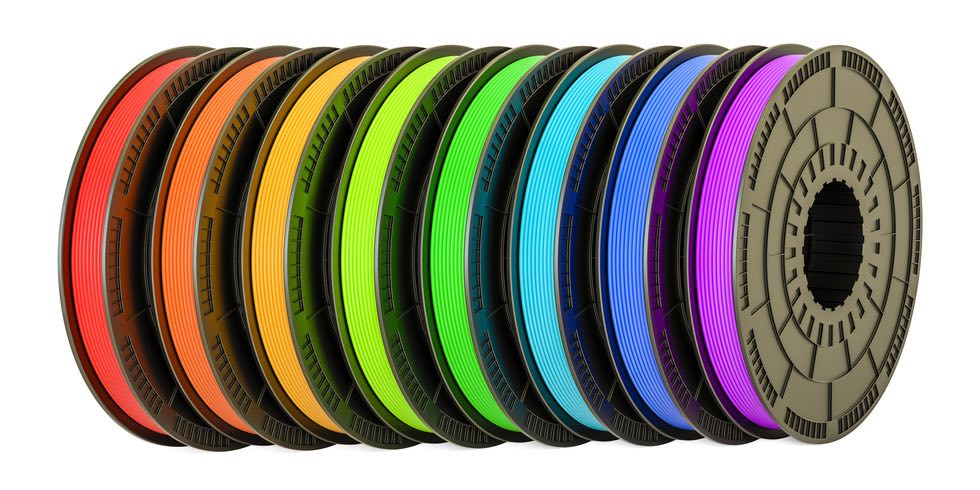Polylactic Acid (PLA): The Environment-friendly Plastic
What is PLA?
Polylactic acid or polyactide (PLA) is a biodegradable and bioactive polyester made up of lactic acid building blocks. It was first discovered in 1932 by Wallace Carothers by heating lactic acid under vacuum while removing condensed water. During the early times, only low-density PLA was produced. By using lactide as a raw material and through the process of ring-opening polymerization, a high-density version of PLA was finally developed.
Early applications of high-density PLA were mostly limited to biomedical areas due to its ability to be safely absorbed biologically. Over the past decades, the development of economical production methods and a rising environmental consciousness in consumers lead to the widespread use of PLA as packaging material for consumer goods. PLA is manufactured from renewable sources and is compostable, addressing problems in solid waste disposal and lessening our dependence on petroleum-based raw materials. It is currently the second most produced and consumed bioplastic in the world in terms of volume.
Table of PLA Properties
| Property | Value |
|---|---|
| Full Name | Polylactic acid (PLA) |
| Melting Point | 150 to 160 °C (302 to 320 °F) |
| Glass Transition | 60-65 °C |
| Injection Mold Temperature | 178 to 240 °C (353 to 464 °F) |
| Density | 1.210–1.430 g·cm−3 |
| Chemical Formula | (C3H4O2)n |
| Crystallinity | 37% |
| Tensile Modulus | 2.7–16 GPa |
| Solublility | Chlorinated solvents, hot benzene, tetrahydrofuran, and dioxane (not water soluable). |
How is PLA made?
PLA is a polyester (polymer containing the ester group) made with two possible monomers or building blocks: lactic acid, and lactide. Lactic acid can be produced by the bacterial fermentation of a carbohydrate source under controlled conditions. In the industrial scale production of lactic acid, the carbohydrate source of choice can be corn starch, cassava roots, or sugarcane, making the process sustainable and renewable.
Production of PLA by the direct condensation of lactic acid is possible. However, this process usually results in the less-desired low-density PLA. To produce high-density PLA, the lactic acid is heated in the presence of an acid catalyst to form cyclic lactide. In the presence of metal catalysts, lactide undergoes a ring-opening polymerization process to form high-density PLA.
Research is ongoing to come up with even more eco-friendly and cheaper methods of producing PLA. In addition the agricultural produce itself, crop residue such as stems, straw, husks, and leaves, can be processed and used as alternative carbohydrate sources. Residue that cannot be fermented can be used as a heat source to lessen the use of fossil fuel-derived hydrocarbons.
Advantages of PLA
One of the major advantages of PLA is its biodegradable nature and the sustainable process by which it is made, making it the environmentally friendly choice of plastic. Under the right circumstances, PLA can break down into its natural elements in less than a month in contrast to the centuries it will take for traditional plastics to decompose. PLA is especially suitable in short lifespan applications such as in water bottles and food containers.
The process by which PLA Is made is also more environment-friendly. In addition to using renewable raw materials, emission of greenhouse gases during production is also lower. Because carbon dioxide is consumed during the growth of corn, the net greenhouse gas emission of the overall PLA production process can even be considered negative. Ongoing studies on the use of alternative carbohydrate sources, such as agricultural and household wastes, even suggest that PLA production can lead to a decrease in overall solid waste.
PLA is a thermoplastic, meaning it will turn into a liquid in its melting point of 150 to 160 Celsius. A nifty feature of thermoplastics is that they can be heated, set upon cooling, and reheated again to form other shapes without any degradation. In contrast, a thermosetting plastic (such as epoxy or melamine) can only be heated and molded once, but the resulting product can no longer be reheated as it will just burn. This property of PLA makes it a desirable material for recycling.
PLA can be broken down to its original monomers by a thermal de-polymerization process or by hydrolysis. The resulting monomer solution can be purified and used for subsequent PLA production without any loss of quality. Should a material made from PLA be incinerated, no toxic fumes will be generated.
Disadvantages of PLA
The ease with which PLA melts makes it a material that is easy to work with. However, this also renders PLA unsuitable for high temperature applications such as containers made for holding hot liquids. A material made from PLA may even show signs of getting soft or deforming on a hot summer day.
PLA is still considered inferior to polyethylene terephthalate (PET) for long-term food storage applications due to permeability issues with PLA. PLA packaging material has been found to be more permeable to moisture and oxygen compared to other plastics, which may result in faster food spoilage. Applications where toughness and impact resistance are critical may also be inappropriate for the more brittle PLA.
What materials can be made with PLA?
PLA can be processed via extrusion, injection molding, casting, blown film, thermoforming, and fiber spinning to form useful and versatile products. It is typically available in the market as thin films for thermoforming, plastic pellets for injection molding, or 3D printable filaments. A variety of colors of PLA is available.
Sturdier versions of PLA have been developed by mixing different PLA isomers, resulting in higher melting temperature (higher by 40 to 50 Celsius) and increased mechanical strength. This improved version has seen a wide array of applications, such as microwavable containers and engineering plastics. Short-term applications such as food containers, water bottles, and disposable cutlery are a popular use for PLA. A PLA film shrinks upon heating, making it a desirable material for shrink wrap.
Remarks from firms that use PLA as material for food packaging indicate the preference for PLA due to increased aesthetics, better printability, good resistance to grease and oils, and reduced issues in taste and odor transfer.
PLA is widely used in the medical field due to its ability to degrade into non-toxic lactic acid. Medical implants such as screws, rods, pins and mesh have been made using PLA. Inside the patient’s body, these implants completely break down in 6 months to 2 years, eliminating the need for further surgery.
PLA can be extruded into thin fibers with significant mechanical strength. These PLA fibers have been used to manufacture casual sports apparel, upholstery material, hygiene products, and diapers.
PLA is one of the two plastics most commonly used in 3D printing (the other one being Acrylonitrile Butadiene Styrene, or ABS). Specifically, PLA is widely used in fused filament fabrication 3D printing, where PLA solids are encased in plaster-like mouldings to form moulds that can be filled with molten metal. This is a technique known as “lost PLA casting”
What is the future for PLA?
The development of cheaper and more environment friendly processes by which PLA is made should result in the decrease of its price in the market, leading to its more widespread application. This will be further aided by a growing environmentally conscious consumer base. Issues with permeability, brittleness, and low melting temperature will have to be addressed by further research, but it is safe to say that PLA will continue to substitute petroleum-based plastics for pharmaceutical and food packaging materials in the future.




Thank you for getting more accurate information about PLA.
Global Polylactic Acid (PLA) Market Is Projected To Reach USD 2.657.8 Million By 2022
In terms of revenue in 2014, the global market for polylactic acid Market was calculated to be USD 825.0 million and is projected to reach USD 2,657.8 million by 2022, growing at a CAGR of 16.3% from 2015 to 2022. In 2014, in terms of volume the market demand for polylactic acid was 375.0 kilo tons and is projected to reach 1,031.1 kilo tons by 2022 at a CAGR of 14.0% during the forecast period.
I do not think you can call PLA biodegradable. It is compostable but not biodegradable. The main enzyme which biodegrades PLA is called Proteinase K. This is not readily found in the environment and therefore, the ease at which PLA can degrade in the environment is low. Only degradation through microorganism can be defined as biodegradable. PLA can degrade quickly under the right conditions, specifically heat and hydrolysis, however, both are not immediately found in nature so a PLA bag left in soil can take nearly as long to degrade as a conventional plastic bag. Certain studies have alluded to the fact that PLA may degrade faster and fully in the marine environment.
If we continue to call PLA biodegradable, we risk leading consumers astray and allowing more plastics to enter our environment, leading to increased litter and destruction of biodiversity.
@Hello mate- you might want to get some facts straight – IT IS NOT BIODEGRADABLE! You might have written this article 3 years ago and had no good information- but maybe you want to change it since you ‘love diving into the latest and greatest in emerging technologies and seeing what they can do’. Cheers!
What about Hemp bioplastic, will it biodegrade???
Hi:
I am new to Hemp farming, got USDA license last November. I interested in Hemp Bioplastic especially for BLISTER packaging, can Bioplastic suitable for blister packing, since that where LOTS OF PLASTIC is consumed…….and the biggest demand for petroleum. I may consider medical parts………since I been in “medical” for over 35 years.